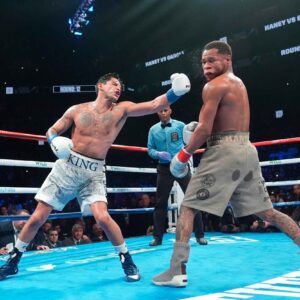If you’ve gone to the grocery store or taken a look at your utility bill, you’ve encountered inflation. In July 2022, the inflation rate rose 8.5% year over year, falling slightly below the 40-year high of 9.1% in June. These dramatic inflation spikes contribute to market volatility and economic instability, which can create upheaval in the traditional stock market.
This begs the question: What asset classes are commonly used to protect wealth while trying to still increase portfolios’ risk-adjusted returns? Can those assets work as portfolio diversification for everyone, no matter their net worth?
Inflation impacts every investor, regardless of portfolio size. One of the most vulnerable asset classes during times of high inflation is cash, as the most direct impact of inflation is a decrease in purchasing power. For example, if you hold $100,000 in cash during 2022 inflation levels (8.5%), you’ll lose $8,500 in purchasing power.
What Is An Inflation Hedge?
An inflation hedge is an investment meant to protect a portfolio from diminishing purchasing power due to inflation. These hedges are typically assets expected to maintain or increase in value while inflation rises.
On the other hand, some hedges may still be expected to decrease in value, just at a slower pace than the value of the currency.
In response to rising inflation, central banks often use monetary policy to maintain normal levels of inflation. We can see this in the US, with the Federal Reserve implementing the steepest interest rate rises in over 40 years.
How Do Inflation Hedges Work?
Hedging against inflation means taking steps to protect the value of an investment portfolio from the effects of inflation. Certain investments might seem to provide a decent return, but when the loss in the currency’s value is factored in, sometimes they’re sold at a loss.
For example, if a trader purchases a stock that gives a 5% return, but the inflation is above 5%, the trader will still see a loss in overall value when they sell.
When assets are considered inflation hedges, it can be self-fulfilling — investors flock to these assets when purchasing power decreases, which keeps their values high.
There are a few ways to attempt inflation hedging. One option is to purchase assets whose value tends to be positively correlated with inflation. If inflation rises, their values will rise as well. Another option is to invest in securities specifically designed to be inflation hedges, such as bonds that pay an interest rate partially based on the rate of inflation.
Help Hedge Against Inflation With Contemporary Art
One way to potentially mitigate inflation-related financial loss, especially when high levels of inflation meet high market volatility, is to diversify your portfolio with alternative assets.
Hard assets such as collectibles, real estate, and precious metals have long been considered investments that provide inflation protection.
Caption: Internal Masterworks analysis. Bloomberg. 12/31/2021. Index data updated as of 12/31/2021. S&P 500 is represented by SPXT Index. There are significant differences between the asset classes presented. Repeat-Sale Pair Index of Post-War and Contemporary Art (as defined by the applicable auction house) using S&P CoreLogic Case-Shiller Home Price Indices Methodology
Historically, art has repeatedly proven to be a strong inflation hedge — in May, the three major auction houses in New York sold a record-breaking $2.8 billion in fine art, including setting numerous records for blue-chip artists like Andy Warhol, Jean-Michel Basquiat, and Yayoi Kusama. These impressive results happened as the stock market saw multiple stumbles.
Low Correlation With Traditional Markets
Contemporary Art has a low correlation to traditional investments such as stocks and bonds, which means that when stocks or bonds are volatile or falling, the price of Contemporary Art isn’t affected.
Citi Private Bank calculated a long-term correlation coefficient of 0.29 between Post-War & Contemporary Art and cash, -0.04 between Post-War & Contemporary Art and the S&P 500, and -0.18 between Post-War & Contemporary art and fixed income.
Art Valuation
The fine art market is largely dependent on buyer sentiment, meaning when inflation rises and investors are searching for a hedge, the art market can still see appreciation.
Art also has an intrinsic value beyond investment, as it gives the owner the pleasure of looking at it on their wall — this value can’t go away with inflation.
For investors looking to diversify without purchasing a multi-million dollar art piece, they have the option to invest in fractional shares of contemporary artwork.
How To Invest in Art
Investors seeking a hard asset to diversify their portfolio and help with inflation can purchase art through multiple channels. Visiting an art fair or attending an auction are some of the easiest ways to purchase investment-grade artwork.
However, the price tag on blue-chip art is can be prohibitive — Andy Warhol’s Shot Sage Blue Marilyn broke auction records in Spring 2022, selling for $195 million.
If you don’t have a couple extra millions of dollars sitting around, buying fine art outright isn’t really an option. Not to mention that owning artwork has its own expenses — storage, maintenance, and authentication.
For investors looking to buy into the Contemporary Art market who can’t afford an original Basquiat, they can invest in shares of Contemporary Art.
Masterworks is the first platform to bring fine art investing to the retail space. Masterworks’ industry-leading research and acquisition teams use proprietary data and art market expertise to curate a collection of iconic works of contemporary art.
Skip the waitlist and invest in contemporary art here.
Read more: Understanding Fractional Art Investing
This material is provided for informational and educational purposes only. It is not intended to be investment advice and should not be relied on to form the basis of an investment decision.
Diversification and asset allocation do not ensure profit or guarantee against loss. There are significant differences between art and other asset classes. Investing involves risk, including loss of all principal. See important Regulation A disclosures at masterworks.io/cd


















Add comment